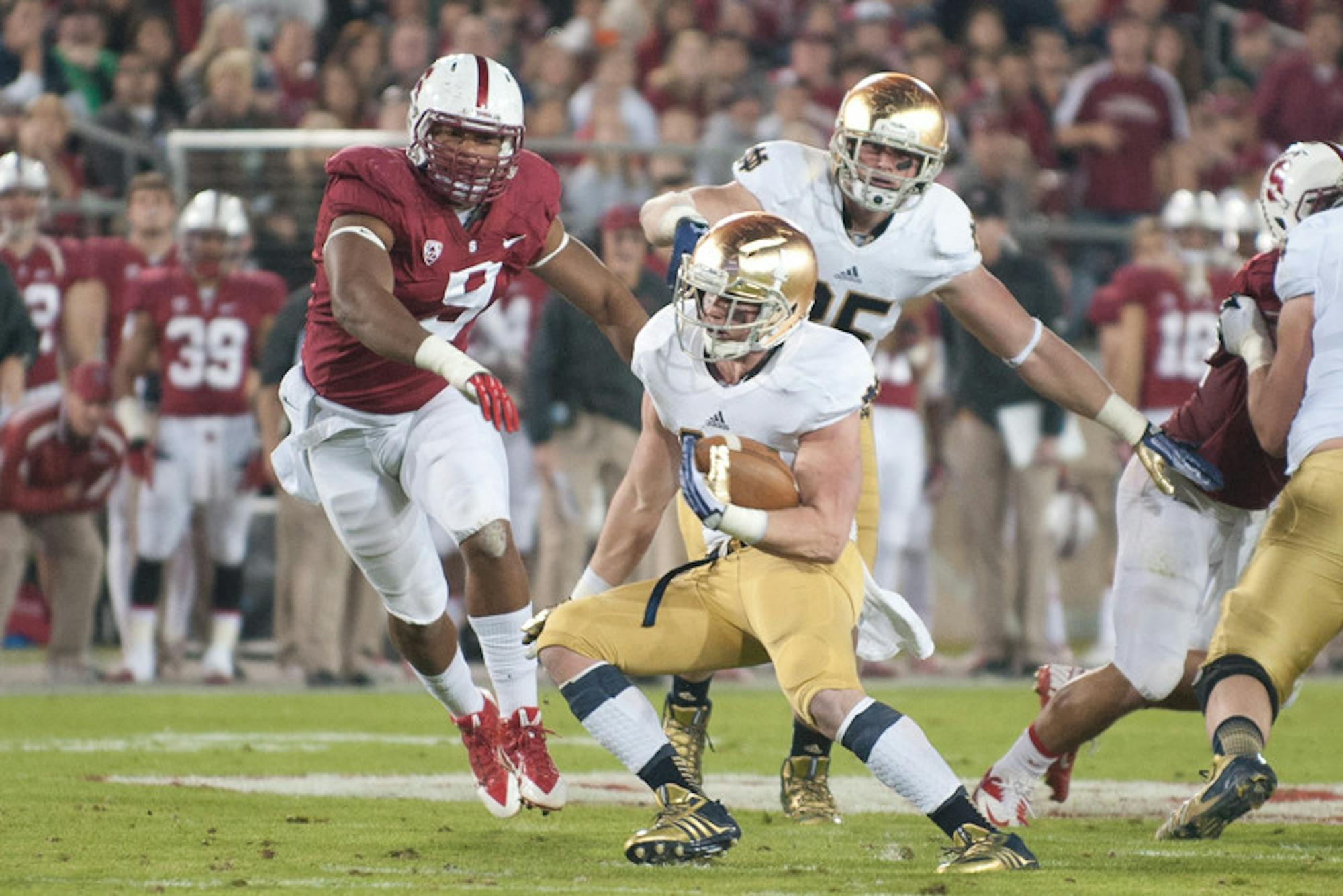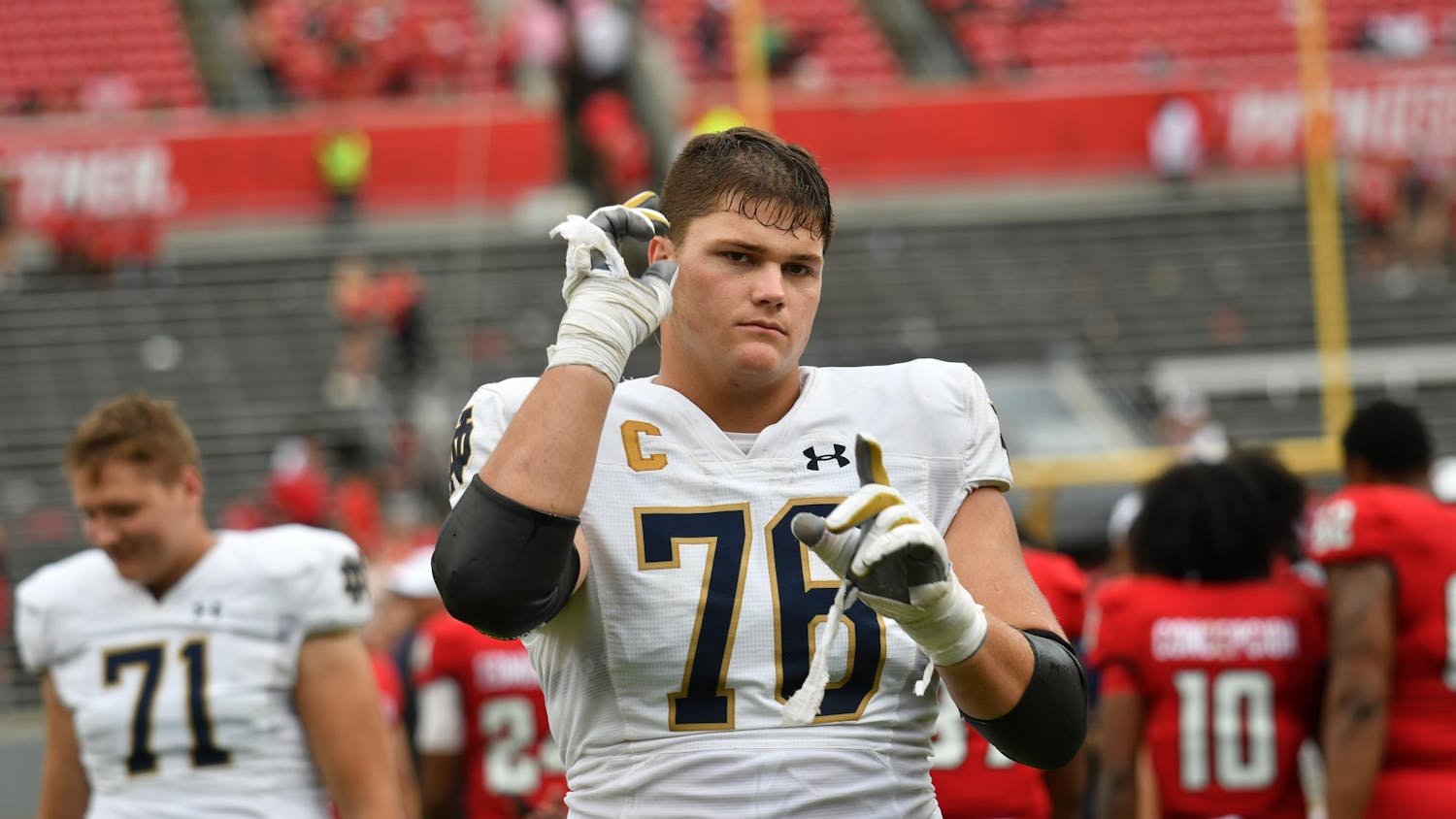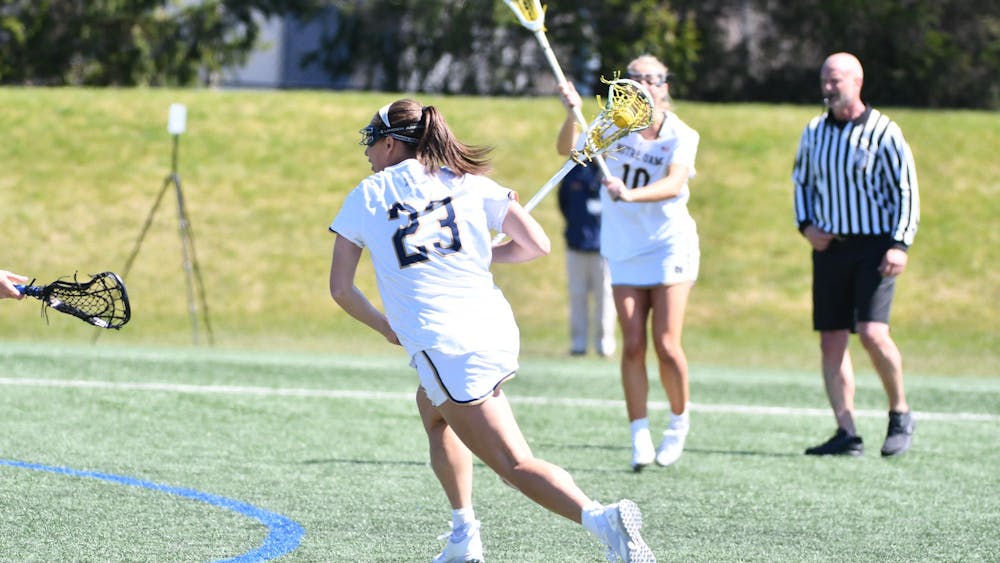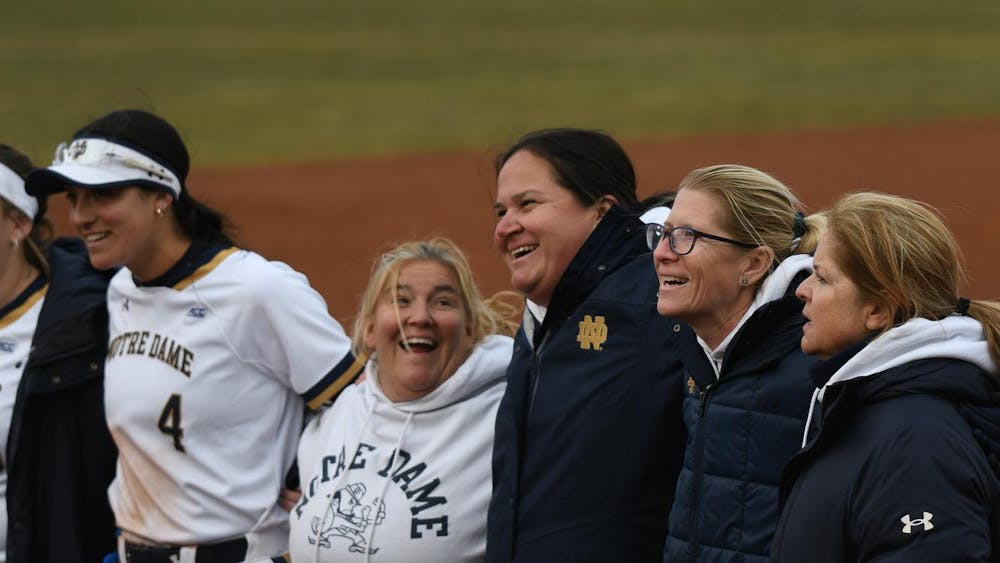
It came against Stanford as the Irish beat the Cardinal in overtime, 20-13. It catapulted Notre Dame into the second half of its season with a perfect 6-0 record. People danced in the rain. Students stormed the field (Well, they walked around ushers and stepped over fences in polite defiance, at least).
Last season’s matchup with Stanford was hardly magical. The Irish lost 27-20 in the final regular-season game of an uninspired season sealed weeks before by a 28-21 loss to Pitt. By the time the Irish played Stanford, they had already waved goodbye to the chance to redefine themselves.
Notre Dame takes the field against the Cardinal on Saturday with its identity far from fixed. They have hinted at who they could be: a potent offense led by an elite quarterback; a resilient and stingy defense.
Notre Dame has yet to be those things against a top-25 team, but the Irish have built a resume that suggests they can. Senior quarterback Everett Golson has completed 69.6 percent of his passes and has thrown for 1142 yards, 285.5 per game. The defense is tied for ninth in FBS in red zone defense (and this includes teams with significantly weaker schedules).
What we don’t know is if they can run.
Golson has scored all but one of Notre Dame’s rushing touchdowns, and no Irish running back averages above 50 yards per game.
Sophomore Greg Bryant leads the way with 43.5 yards per game and 179 rushing yards. Sophomore Tarean Folson has 160 total yards (37.8 per game) and senior Cam McDaniel has 138 yards (32.5 per game).
They have recorded these modest numbers by playing against Rice, Michigan, Purdue and Syracuse. Golson powered the Irish over these teams by throwing 11 touchdown passes, but top-25 opponents will have defenses capable of challenging Notre Dame’s one-dimensionality.
If opponents don’t have to respect the run, they can focus on closing Golson’s passing lanes. They can take away big-play opportunities without fearing they’ll get burned up front.
Maybe this is all part of a plan. But you have to wonder how the lack of run game could be purposeful with such talented backs who could push the offense to the next level. Why limit yourself?
Apparently, then, the Irish haven’t been able to activate the run. And it’s not just a running backs problem.
Gaps close quickly on Notre Dame’s runners. They have had few chances for breakaway plays. It’s a symptom of the same problem that has led to Golson’s being sacked seven times through four games. The offensive line allowed eight sacks all of last season.
The offensive line lost a rock when Zack Martin was drafted in the first round by the Dallas Cowboys and Chris Watt as drafted by the San Diego Chargers in the third round. And it hasn’t re-solidified into a cohesive, consistent unit.
During Notre Dame’s bye week before the Syracuse game, Kelly reshuffled the line, looking for an answer.
Golson was sacked in the first quarter against the Orange. But the Irish had the screen pass working and moved the ball (for the most part) effectively down field, thanks in part to the efforts of the offensive line.
The expectation is, as Irish head coach Brian Kelly said at his Sunday teleconference, that the offensive line will continue to grow.
This often-overlooked unit whose contributions rarely appear in stats lines can help the Irish define themselves.
If the offensive line settles down as the lineman get more comfortable with each other and their roles, it can lift Notre Dame to the next level of offensive production. The line can open up the field for Golson and help an offense averaging 35.0 points per game score even more prolifically.
It could be the difference between a top-eight team and a top-four, playoff contender.













